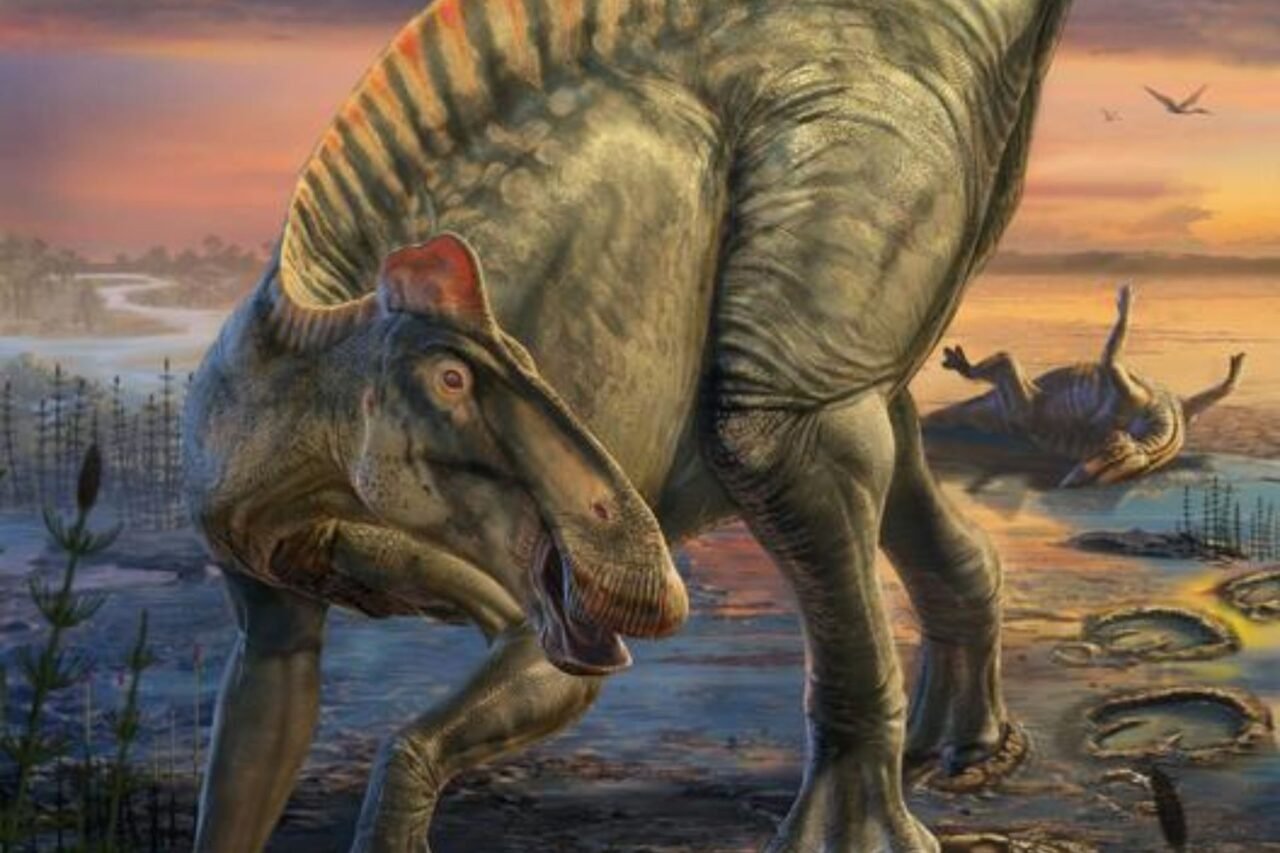Science
Rare Dinosaur Mummies Reveal Stunning Ancient Features

In a notable discovery, researchers have unveiled striking details of the dinosaur species Edmontosaurus annectens using two remarkably preserved specimens found in Wyoming’s “mummy zone.” This area, known for its well-preserved fossils, provided insights into the appearance of this large duck-billed dinosaur that roamed the Earth approximately 66 million years ago. The findings were published on October 5, 2023, in the journal Science.
The specimens, excavated in 2000 and 2001, included a late juvenile and an early adult dinosaur. Unlike typical fossilization processes, these specimens displayed intricate details of skin, scales, and hooves preserved under a thin layer of clay. According to co-author Paul Sereno, a professor of organismal biology and anatomy at the University of Chicago, this research marks the first time a complete and fleshed-out view of a large dinosaur has been accurately reconstructed.
The Unique Preservation Process
The discovery process began in the early 1900s when researchers first identified well-preserved fossils within the Lance Formation, a rock formation dating back to the Cretaceous Period in east-central Wyoming. Sereno and his team later conducted field investigations and historical research to locate the site, which they named the “mummy zone.”
During the excavation of the two E. annectens specimens, researchers noted that the preservation of skin and other external features was due to a phenomenon known as clay templating. Following the dinosaurs’ deaths, a flash flood buried their remains in sediment. As the carcasses decomposed, a film of bacteria formed on their surfaces, which attracted clay particles from the sediment. Sereno described this process as creating a “mask” or “template” that was less than 0.01 inches (0.02 centimeters) thick, effectively capturing the details of the dinosaurs’ surfaces.
Reconstructing the Dinosaur’s Appearance
The findings enabled the researchers to ascertain that Edmontosaurus annectens had a fleshy crest along its neck and back, transitioning into a row of spikes along its tail. The skin was primarily covered with small, pebble-like scales. Notably, the adult specimen exhibited wedge-shaped hooves, which represent significant firsts in paleontological records, including the earliest documented hooves in a land vertebrate.
“This research highlights many amazing ‘firsts’ preserved in these duck-billed mummies,” Sereno stated, emphasizing the importance of these findings. Digital artists have utilized the newly acquired data to visualize the dinosaur’s movement across soft mud during the late Cretaceous Period. This not only enhances the understanding of the species but also illustrates the conditions in which these remarkable fossils were formed.
As ongoing exploration of the mummy zone continues, researchers anticipate further discoveries that could shed more light on the ancient creatures that once roamed the Earth. The meticulous study of these fossils not only brings to life a long-lost dinosaur but also enriches our understanding of the preservation processes that can occur in unique geological settings.
-

 Business1 week ago
Business1 week agoIconic Sand Dollar Social Club Listed for $3 Million in Folly Beach
-

 Politics1 week ago
Politics1 week agoAfghan Refugee Detained by ICE After Asylum Hearing in New York
-

 Health1 week ago
Health1 week agoPeptilogics Secures $78 Million to Combat Prosthetic Joint Infections
-

 Science1 week ago
Science1 week agoResearchers Achieve Fastest Genome Sequencing in Under Four Hours
-

 Lifestyle1 week ago
Lifestyle1 week agoJump for Good: San Clemente Pier Fundraiser Allows Legal Leaps
-

 Health1 week ago
Health1 week agoResearcher Uncovers Zika Virus Pathway to Placenta Using Nanotubes
-

 Business1 week ago
Business1 week agoSan Jose High-Rise Faces Foreclosure Over $182.5 Million Loan
-

 World1 week ago
World1 week agoUS Passport Ranks Drop Out of Top 10 for First Time Ever
-

 Science1 week ago
Science1 week agoMars Observed: Detailed Imaging Reveals Dust Avalanche Dynamics
-

 Entertainment1 week ago
Entertainment1 week agoJennifer Lopez Addresses A-Rod Split in Candid Interview
-

 Top Stories7 days ago
Top Stories7 days agoChicago Symphony Orchestra Dazzles with Berlioz Under Mäkelä
-

 World1 week ago
World1 week agoRegional Pilots’ Salaries Surge to Six Figures in 2025









